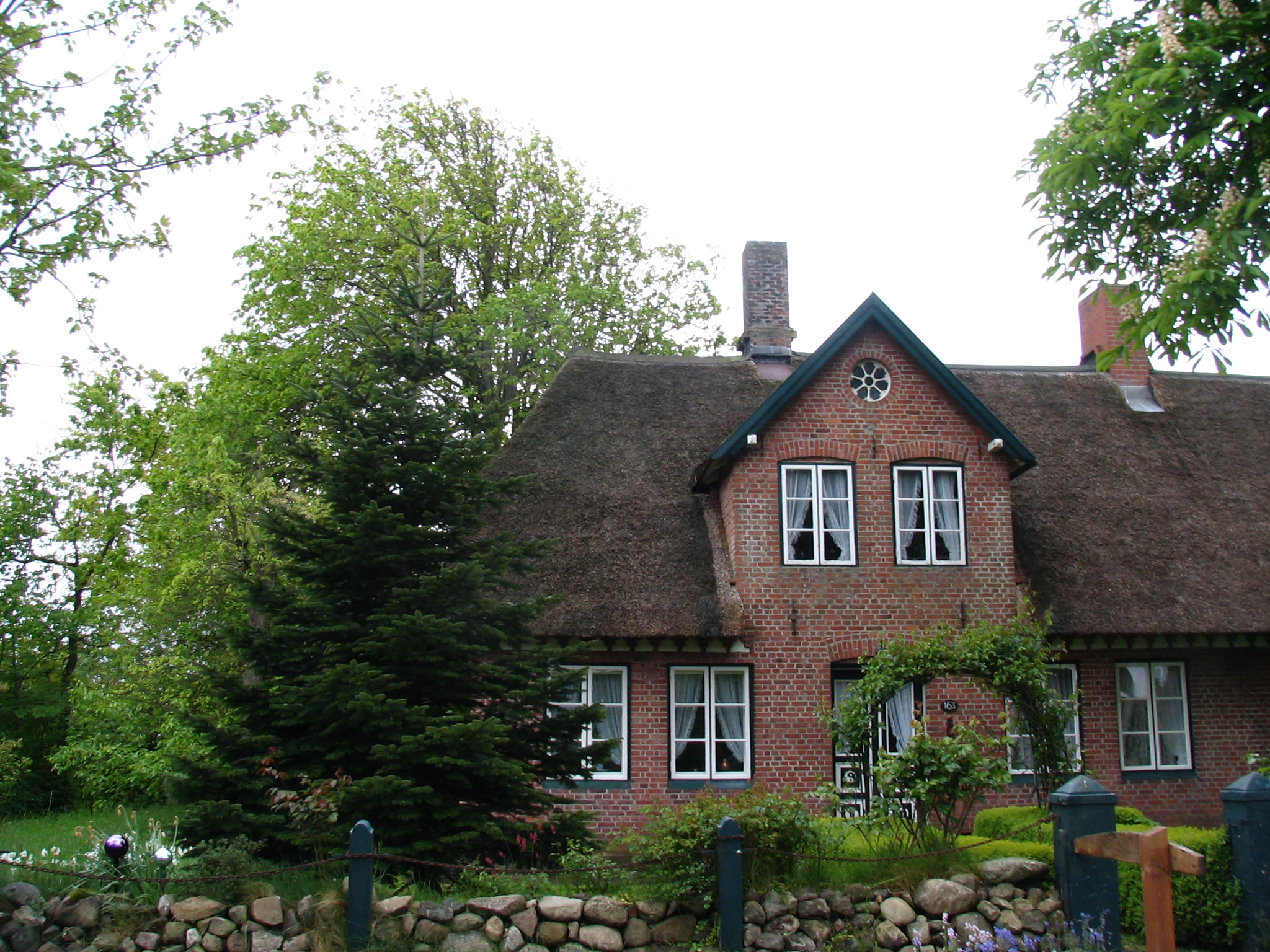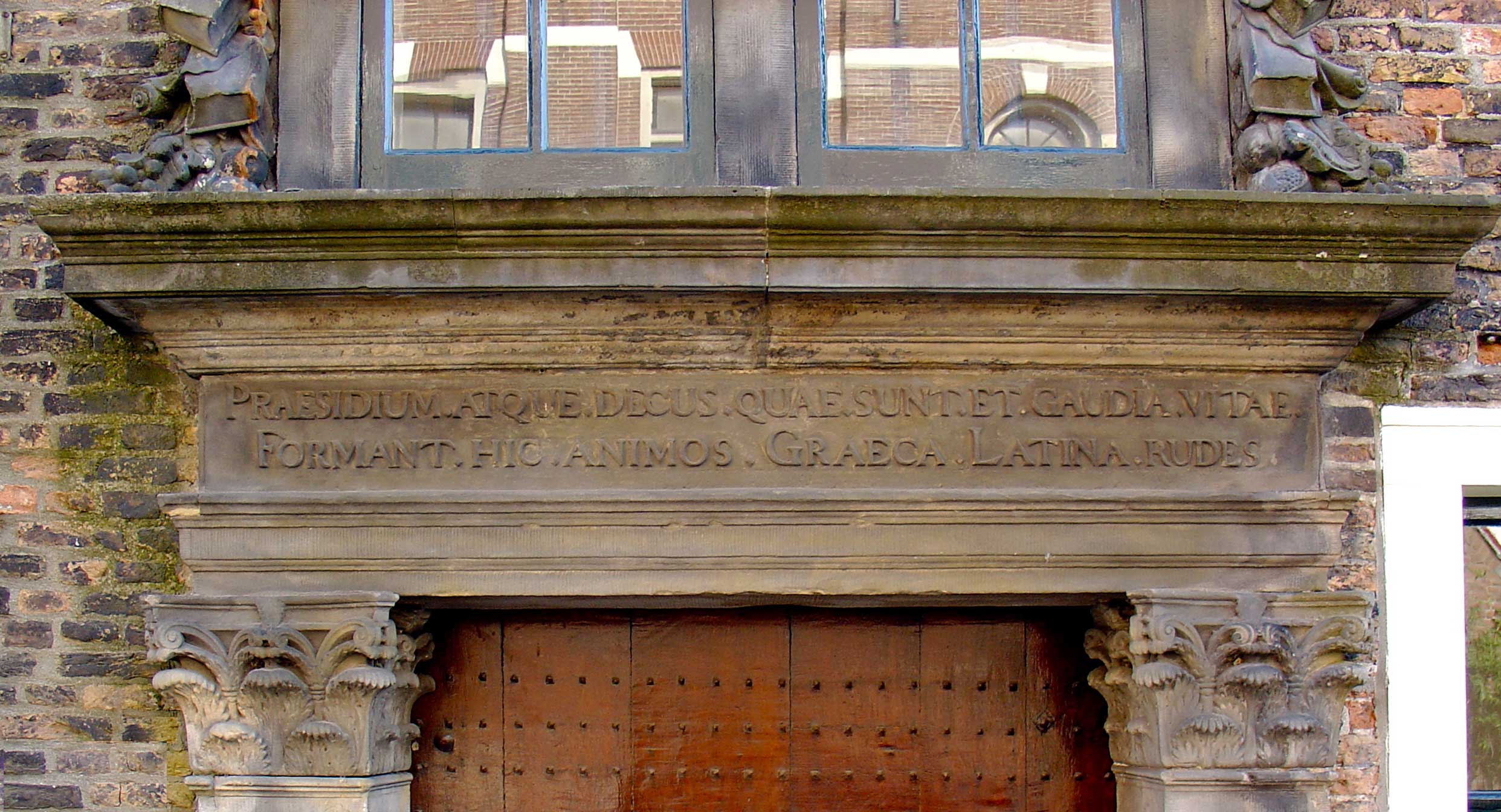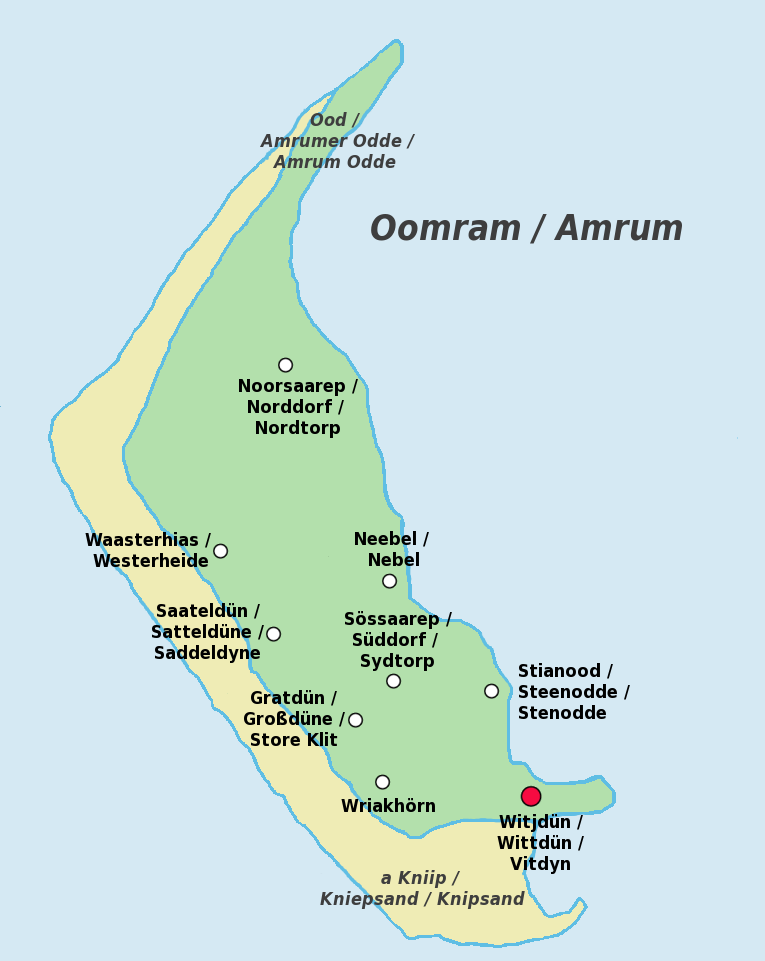|
Matthias Petersen
Matthias Petersen (born Matz Peters; 24 December 1632, in Oldsum – 16 September 1706) was a sea captain and whaler from Oldsum on the North Frisian island of Föhr. He became known for catching 373 whales throughout his career. Life He was born as Matz Peters to a certain Peter Johnen (1595-1643) on Christmas Eve of 1632; his two older brothers were Jens (1627-1697) and Peter (1629-1678). He also had a younger brother, John (or Jon) (1641-1691) and two younger sisters, Thur and Jong Thur. As was the custom on the Frisian islands at the time, Peters left his home as a young boy of about 12 years to participate in the newly flourishing whaling business in the Netherlands and also took lessons in navigation. In the course of his travels he also changed his name to Matthias Petersen. Known as ''"Glücklicher Matthias"'', ''"Matthias der Glückliche"'' or ''"Mathis der Glückliche"'', all of which translate to "Lucky Mathew", he became eventually famous by catching a total of 373 whal ... [...More Info...] [...Related Items...] OR: [Wikipedia] [Google] [Baidu] |
Oldsum
Oldsum ( Fering: ''Olersem'') is a municipality on the island of Föhr, in the district of Nordfriesland, in Schleswig-Holstein, Germany. Geography The municipality of Oldsum consists of the three hamlets of Oldsum, Klintum ( Fering: ''Klantem'') and Toftum (Fering: ''Taftem'') which are spread over some two kilometres along a main road. The population number about 600. The landscape is marked by well-preserved thatched farmhouses. Oldsum's landmark is an ancient thatched windmill whose antecessor presumably dates back to the year 1700. Though burned down 200 years later, it was rebuilt and subsequently was in use until 1954. Since 1972 the mill is exclusively used as a dwelling house. Oldsum is situated approximately two kilometres from the western shore of the island, the northern coastline is a little closer. Oldsum adjoins Süderende to the south, Dunsum to the southwest and Alkersum and Midlum to the east. History Oldsum was first recorded in 1462 as ''Uluersum''. Durin ... [...More Info...] [...Related Items...] OR: [Wikipedia] [Google] [Baidu] |
Latin School
The Latin school was the grammar school of 14th- to 19th-century Europe, though the latter term was much more common in England. Emphasis was placed, as the name indicates, on learning to use Latin. The education given at Latin schools gave great emphasis to the complicated grammar of the Latin language, initially in its Medieval Latin form. Grammar was the most basic part of the trivium and the Liberal arts — in artistic personifications Grammar's attribute was the birch rod. Latin school prepared students for university, as well as enabling those of middle class status to rise above their station. It was therefore not unusual for children of commoners to attend Latin schools, especially if they were expected to pursue a career within the church.Wiesner-Hanks, p122. Although Latin schools existed in many parts of Europe in the 14th century and were more open to the laity, prior to that the Church allowed for Latin schools for the sole purpose of training those who would one d ... [...More Info...] [...Related Items...] OR: [Wikipedia] [Google] [Baidu] |
Merian (magazine)
''Merian'' is a German travel magazine which was founded in 1948. It is named after Matthäus Merian. The magazine is published by Jahreszeiten Verlag in Hamburg Hamburg (, ; nds, label=Hamburg German, Low Saxon, Hamborg ), officially the Free and Hanseatic City of Hamburg (german: Freie und Hansestadt Hamburg; nds, label=Low Saxon, Friee un Hansestadt Hamborg),. is the List of cities in Germany by popul .... Each issue of this monthly print publication is devoted to a specific city or region. References External links Official siteWorldCat 1948 establishments in Germany German-language magazines Magazines established in 1948 Magazines published in Hamburg Monthly magazines published in Germany Tourism magazines {{Europe-culture-mag-stub ... [...More Info...] [...Related Items...] OR: [Wikipedia] [Google] [Baidu] |
Peter Matthiessen
Peter Matthiessen (May 22, 1927 – April 5, 2014) was an American novelist, naturalist, wilderness writer, zen teacher and CIA Operative. A co-founder of the literary magazine ''The Paris Review'', he was the only writer to have won the National Book Award in both nonfiction ('' The Snow Leopard'', 1979, category Contemporary Thought) and fiction ('' Shadow Country'', 2008)."Washington Post Obituary" Obituary, Washington Post, April 6, 2014. He was also a prominent environmental activist. Matthiessen's nonfiction featured nature and travel, notably ''The Snow Leopard'' (1978) and [...More Info...] [...Related Items...] OR: [Wikipedia] [Google] [Baidu] |
Nieblum
Nieblum ( Fering: ''Njiblem'', Danish: ''Niblum'') is a municipality on the island of Föhr, in the district of Nordfriesland, in Schleswig-Holstein, Germany. Geography Nieblum is located on the southern shore of Föhr, approximately halfways between the eastern and western edges of the island. Next to the village of Nieblum proper, the municipality includes the once independent hamlet of Goting which is situated just west of Nieblum. In Goting there is a cliffside of several meters height. History Many of the old Frisian houses used to belong to sea captains who had made a fortune as whalers on Dutch ships. It was a hard and dangerous work which claimed a lot of lives. The tombstones in the graveyard of St. John's church, the so-called "Frisian Cathedral", in the village testify this. The church was built in the 13th century and it is the largest of the three churches on Föhr. Politics Since the communal elections of 2018, the ''Nieblumer Wählergemeinschaft'' holds all nine s ... [...More Info...] [...Related Items...] OR: [Wikipedia] [Google] [Baidu] |
Jens Jacob Eschels
Jens Jacob Eschels (12 December 1757 – 7 June 1842) was a nautical captain and is the author of the oldest known captain's autobiography in German. Life Eschels, a great-great-grandchild of whaling captain Matthias Petersen, was born in Nieblum on the North Frisian island of Föhr, where many seafarers of the early modern era came from. He was the son of a penniless family; his father often sailed "before the mast" for the Dutch East India Company. In 1769, aged eleven, Eschels joined the crew of an Amsterdam whaler as a deck boy, repeatedly lost his ship in the Arctic, but returned unharmed. Afterwards, he sailed on various Amsterdam whalers. During the winter season, he learned the "art of navigating". In 1778, Eschels changed to the less dangerous and on a long-term prospect more prosperous trade shipping. Thereby, he sailed all European seas. In 1781, he eventually crossed the Atlantic Ocean for the first time on a journey to the Caribbean. In Grenada, he was given the ... [...More Info...] [...Related Items...] OR: [Wikipedia] [Google] [Baidu] |
Altona, Hamburg
Altona (), also called Hamburg-Altona, is the westernmost urban borough (''Bezirk'') of the German city state of Hamburg, on the right bank of the Elbe river. From 1640 to 1864, Altona was under the administration of the Danish monarchy. Altona was an independent borough until 1937. In 2016 the population was 270,263. History Altona was founded in 1535 as a village of fishermen in what was then Holstein-Pinneberg. In 1640, Altona came under Danish rule as part of Holstein-Glückstadt, and in 1664 was granted municipal rights by the Danish King Frederik III, who then ruled in personal union as Duke of Holstein. Altona was one of the Danish monarchy's most important harbor towns. The railroad from Altona to Kiel, the Hamburg-Altona–Kiel railway ( da, link=no, Christian VIII Østersø Jernbane), was opened in 1844. Because of severe restrictions on the number of Jews allowed to live in Hamburg until 1864 (with the exception of 1811–1815), a major Jewish communi ... [...More Info...] [...Related Items...] OR: [Wikipedia] [Google] [Baidu] |
Copenhagen
Copenhagen ( or .; da, København ) is the capital and most populous city of Denmark, with a proper population of around 815.000 in the last quarter of 2022; and some 1.370,000 in the urban area; and the wider Copenhagen metropolitan area has 2,057,142 people. Copenhagen is on the islands of Zealand and Amager, separated from Malmö, Sweden, by the Øresund strait. The Øresund Bridge connects the two cities by rail and road. Originally a Vikings, Viking fishing village established in the 10th century in the vicinity of what is now Gammel Strand, Copenhagen became the capital of Denmark in the early 15th century. Beginning in the 17th century, it consolidated its position as a regional centre of power with its institutions, defences, and armed forces. During the Renaissance the city served as the de facto capital of the Kalmar Union, being the seat of monarchy, governing the majority of the present day Nordic countries, Nordic region in a personal union with Sweden and N ... [...More Info...] [...Related Items...] OR: [Wikipedia] [Google] [Baidu] |
Struensee
Lensgreve Johann Friedrich Struensee (5 August 1737 – 28 April 1772) was a German-Danish physician, philosopher and statesman. He became royal physician to the mentally ill King Christian VII of Denmark and a minister in the Danish government. He rose in power to a position of "''de facto''" regent of the country, where he tried to carry out widespread reforms. His affair with Queen Caroline Matilda ("Caroline Mathilde") caused a scandal, especially after the birth of a daughter, Princess Louise Augusta, and was the catalyst for the intrigues and power play that caused his downfall and dramatic death. Upbringing and early career Born at Halle an der Saale and baptized at St. Moritz on 7 August 1737, Struensee was the third child of six born to Pietist theologian and minister Adam Struensee (baptized in Neuruppin on 8 September 1708 – Rendsburg, 20 June 1791), Pfarrer ("curate") in Halle an der Saale in 1732, "Dr. theol. (h. c.) von Halle" ("Doctor of Theology (honori ... [...More Info...] [...Related Items...] OR: [Wikipedia] [Google] [Baidu] |
Amrum
Amrum (; ''Öömrang'' North Frisian: ''Oomram'') is one of the North Frisian Islands on the German North Sea coast, south of Sylt and west of Föhr. It is part of the Nordfriesland district in the federal state of Schleswig-Holstein and has approximately 2,300 inhabitants. The island is made up of a sandy core of geestland and features an extended beach all along its west coast, facing the open North Sea. The east coast borders to mudflats of the Wadden Sea. Sand dunes are a characteristic part of Amrum's landscape, resulting in a vegetation that is largely made up of heath and shrubs. The island's only forest was planted in 1948. Amrum is a refuge for many species of birds and a number of marine mammals including the grey seal and harbour porpoise. Settlements on Amrum have been traced back to the Neolithic period when the area was still a part of the mainland of the Jutland peninsula. During the Middle Ages, Frisian settlers arrived at Amrum and engaged in salt making and se ... [...More Info...] [...Related Items...] OR: [Wikipedia] [Google] [Baidu] |
Sylt
Sylt (; da, Sild; Söl'ring North Frisian: ) is an island in northern Germany, part of Nordfriesland district, Schleswig-Holstein, and well known for the distinctive shape of its shoreline. It belongs to the North Frisian Islands and is the largest island in North Frisia. The northernmost island of Germany, it is known for its tourist resorts, notably Westerland, Kampen and Wenningstedt-Braderup, as well as for its sandy beach. It is frequently covered by the media in connection with its exposed situation in the North Sea and its ongoing loss of land during storm tides. Since 1927, Sylt has been connected to the mainland by the Hindenburgdamm causeway. In later years, it has been a resort for the German jet set and tourists in search of occasional celebrity sightings. Geography With , Sylt is the fourth-largest German island and the largest German island in the North Sea. Sylt is located from off the mainland, to which it is connected by the Hindenburgdamm. Southeast ... [...More Info...] [...Related Items...] OR: [Wikipedia] [Google] [Baidu] |
Wyk Auf Föhr
( ''Fering'' North Frisian: ''Wik'', ''a Wik'', or ''Bi a Wik''; da, Vyk på Før) is the only town on Föhr, the second largest of the North Frisian Islands on the German coast of the North Sea. Like the entire island it belongs to the district of Nordfriesland. Wyk includes the two minor town districts of Boldixum and Südstrand. Geography Wyk is situated on the southeastern edge of the island. About 4,500 inhabitants live there, but during the tourist seasons 20,000 or more people will stay there. It serves as a regional centre for the islands of Föhr and Amrum, providing shopping centres, doctors, a post office, etc. and it is the seat of the ''Amt'' Föhr-Amrum and the social care centre for the islands. The approximately 4,200 other inhabitants of Föhr proper live in other villages on the island. Wyk's major source of income is the tourism business. History and tourism In 1704, Wyk was granted the rights of a seaport, two years later, the rights of a market t ... [...More Info...] [...Related Items...] OR: [Wikipedia] [Google] [Baidu] |






.jpg)